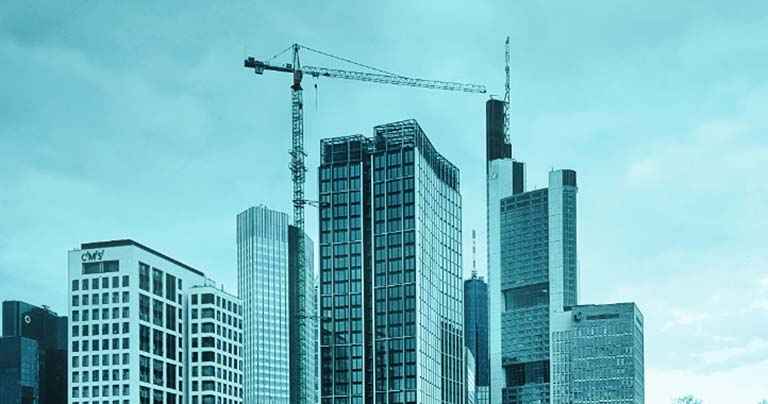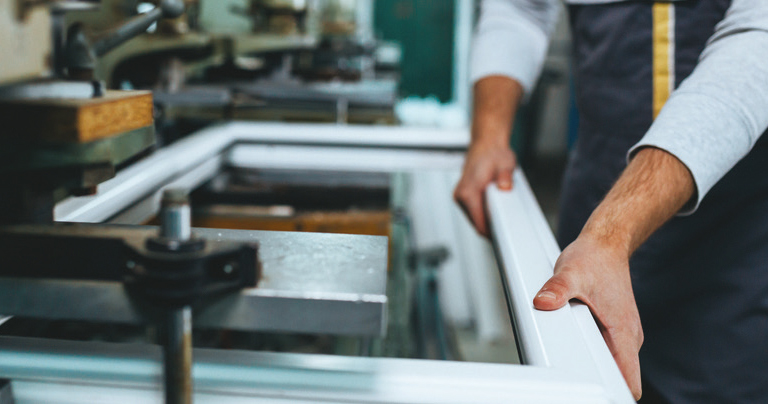PROJECT PROCUREMENT OUTLOOK 2022 – PRODUCT, TECHNOLOGY AND SOLUTIONS
By Edit Team | January 10, 2022 4:10 pm SHARE

Project procurement experts share their views and optimism on available and upcoming products, technologies and solutions that are projected to redefine the sector’s future in the coming years.
Impact of increasing prices on project procurement
According to R. Alex Nagarajan, DGM – Purchase, Zamil Steel Buildings India Pvt. Ltd., “The ongoing increasing price trends will definitely impact the industry on a large scale, and strong powerhouses will be able to do better businesses. And for smaller industries, the unification of all of them can attack such problems. If you look at history, whenever there was a price correction in steel, the industry has always been together. The industry is attached to it and it has come in for a price correction. “I hope it will be the same this time also. Of course, we do see a lot of resistance on a regular basis, but we have to keep doing the business. So, you have to close it instantly and move forward. There is no other way out, like dragging it or anticipating that prices will retain normalcy, which might not happen. In a way, you might miss a golden opportunity in these tiring times. ”
Impacts on green projects and existing contracts
According to Satin Sachdeva, Founder and Secretary General, CERA, the price escalation has already started to impact the projects. But I believe the rental rate will definitely pick up soon as the machines are now becoming dearer by more than 15 percent with the BS-IV norms coming up and with a lot of technology advancements, the manpower cost has taken a toll. “All these things will further escalate the situation. If we talk about road projects, people are already investing so much. So, rather than escalation, I would say it is 20–25 percent less. Today, with the kind of bidding we have the project costs are already going beyond 20–25 percent. I’ve even seen some of the latest projects, which have whopping gone down by almost 35 percent. And catering to all these machines along with manpower and materials is impossible for any of the corporate or infra companies. I think somewhere we are not calculating it right, as everything comes with a price, and if you are going for the right machinery for a specific job, there has to be a cost for it. Today, rental companies own all the younger fleet. Earlier, it was old and used machines, but now all these organised rental companies own the latest fleet and the younger fleet.
So we need to cope and come up with the right balance. We are already the cheapest in the world in terms of rental costs, and many infrastructure companies are struggling with this cost accounting. With the right recoveries, with the right payments, and with the right technology in place, things will be resolved very soon, but as of now, yes, it has been impacted and we will definitely be looking for further escalation in rental equipment and rental costs also.
Impacts on the building materials market
According to Prof. A S Khanna, Chairman, SSPC India, India is very much affected by what we see in the rear view. People are looking to create businesses out of such situations. Some do it correctly, while others profit from taking advantage or disadvantage of such a price increase. And this is not just the cement or steel industry; “I think this applies to the entire industrial segment and the entire business threshold. So, somewhere, I feel that this cost escalation is artificial and manmade to reap benefit and create huge businesses from such trying times.”
The primary concern of our country is that we are harming our own projects and policies regarding creating opportunities. “I don’t think it is the real material cost that has increased, it is basically our wrong intention. And to some extent, China’s industry not working has had a lot of impact on all these materials, raw materials, not only raw materials for construction. I will still say it is not a real thing, it is an artificial thing. But then we have to cope with that, “Khanna adds.
Managing the pricing differences between steel and raw materials
Pricing is a very critical yet vital aspect, and every industry is facing this issue, and transparency can be the only solution to it. “If you keep your raw material costs for your projects transparent to your customers, it will definitely help you meet your customers’ expectations and business standards, especially during such unprecedented times of steep increases in prices,” says Alex. It’s not just the customer or vendor who is sailing and facing such a tiring time, but the entire industry that is under the wrath of the increasing prices. So, it’s very important to maintain transparency in giving rights while finalising the order. In case you find any variation while executing the same, it’s always suggested to discuss the same with the customer and overcome such issues.
Technology-enabled equipment and materials
Here, Satin profoundly says that the present day is all about digitalisation. So, it’s vital that we procure a tech-savvy machine that has features like fuel management, IoT, and digitalisation nowadays, right from ERP to IoT. Especially during the present trying times, where businesses have become more of a virtual thing, it’s difficult for companies and service providers to make a physical visit, so virtual is the only way forward.
Digitalisation in the project procurement process
If you look at the present scenario, the amount of data we analyse should definitely help us to give a lot of data analytics, which again, will definitely tell a storey. So, people should try to understand and try to capture the entire data set within the system. A data-driven approach would undoubtedly cause any organisation to improve their current process cycles or execution methods. Also, I see a lot of database companies coming into this field and helping out organisations with better ways of managing the complete process, which they do, “Alex explains.
Managing construction waste
If you see a construction site like a 10–30 storey building, the kind of steel used for the rebars, slabs, and all the other allied requirements, several pieces are generated, many of which are wasted. Waste metal is not a big concern, as the metal can be reused for various other critical purposes. We can collect them from the project/construction site, put them back in the truck, and reuse them even after several months. However, when we consider the amount of wood that is wasted on construction and project sites, it becomes a major concern. Because that wood waste cannot be processed again for reuse in any other application or any project/construction. Expressing his concern over waste management, Khanna feels that we need to create an ecosystem where we can and should procure only the required quantity as an attempt to generate less waste of wood in the project/construction sites.
Whereas, Alex points out that somebody might look at it as a waste or a leftover at the site. He says, “For an organisation like Zamil, and at the current steel cost, we always look at it as money. Sometime back, when we had an initial survey where we looked at the quantity of the leftover materials, we then derived certain policy changes in our system. We drilled down the BOM quantities, after which they were cut down to an extreme level and procured the exact quantity required for further execution, because anything excess gets wasted and becomes useless from any further application. The moment companies start following suit, we cannot just reduce waste generation, but we can also save huge costs for the company, which again, in the future, can enhance the company’s bottom line.
Boosting the market’s confidence in equipment rental
Talking about the growth structure, Satin highlights that the number of penetrations has increased in the last 4-5 years. Even a smaller company with 3–4 equipment before, today owns more than 50 pieces of equipment, which again indicates that massive growth is happening. So, the industry is shifting from buying to renting today. You don’t really have to get stuck-up on spending your cash flow; rather you can rent out the required equipment for your project. The rental usually starts at 45 lakhs and can go up to 8–10 crores. So, rental, certainly, is a market with huge potential.
The road ahead for infra projects
Construction will no longer be manpower-oriented. It has to be in partnership with IT, cutting-edge technology, and tech-savvy equipment. Because increased penetration of IT infrastructure in the infra segment is important in shaping the entire outlook of the construction and infra segment in the coming years.
Quotes:
“A data-driven approach would undoubtedly enable an organisation improve their procurement process and execution methods.” – R Alex Nagarajan, DGM – Purchase, Zamil Steel Buildings India Pvt. Ltd.
–
“For bright procurement future, it’s essential to procure a tech-savvy machine with features like fuel management, IoT and other digital features.” – Satin Sachdeva, Founder, Secretary-General, CERA
–
“To reduce construction waste, we need to create an ecosystem to procure only required quantity materials for projects.” – Prof. A S Khanna, Chairman, SSPC India
Cookie Consent
We use cookies to personalize your experience. By continuing to visit this website you agree to our Terms & Conditions, Privacy Policy and Cookie Policy.




































-20240213125207.png)

























